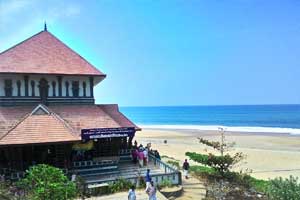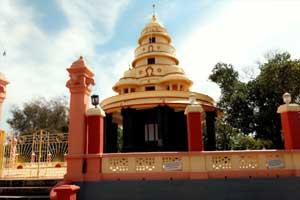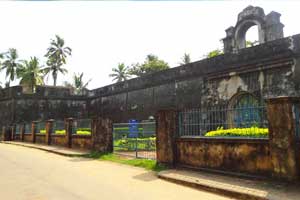Kerala.com Travel Division
WorldViewer Dot Com (India) Pvt. Ltd.
II Floor, G 66, Elders Forum Road
Panampilly Nagar, Cochin, Kerala, India
Pin - 682 036
Mobile: + 91 98460 43403
Mobile: + 91 93886 40364

Janardhana Temple
 The Janardhana Temple is said to be 2000 years old and has a Vishnu shrine. It is said that the original temple was engulfed and destroyed by tidal waves. Years later, a Pandyan king came to the site to do penance to Brahma for a sin he committed. The Lord pardoned the king and in return, asked the king to build another temple at the same site. The story goes that in a dream he was informed of the location of the original idol that was lying deep in the sea. With the help of fishermen, the king reclaimed the idol and reinstalled it in the temple.
The Janardhana Temple is said to be 2000 years old and has a Vishnu shrine. It is said that the original temple was engulfed and destroyed by tidal waves. Years later, a Pandyan king came to the site to do penance to Brahma for a sin he committed. The Lord pardoned the king and in return, asked the king to build another temple at the same site. The story goes that in a dream he was informed of the location of the original idol that was lying deep in the sea. With the help of fishermen, the king reclaimed the idol and reinstalled it in the temple.
The legend also says that Brahma appeared and completed the rituals. Non-Hindus are not allowed to enter the inner sanctum of the temple, but are allowed to walk around the sanctum and stroll around the huge banyan tree. The festivals of the temple are colorful with noisy parades. Another Hindu ritual to be watched is the vavu bali performed on the beach on the new moon day of the month of Karkkidakam (Malayalam Era).
Sivagiri Mutt
 Sivagiri is the headquarters of the Sree Narayana Dharma Sangham Trust. The ashram is devoted to Sree Narayana Guru (1855-1928), whose followers, the Ezhavas, form a large group of Kerala population.
Sivagiri is the headquarters of the Sree Narayana Dharma Sangham Trust. The ashram is devoted to Sree Narayana Guru (1855-1928), whose followers, the Ezhavas, form a large group of Kerala population.
This Mutt was built in the year 1904. It is here that the Guru is believed to have got enlightened and it is here that he is entombed.
Guru preached the doctrine - one caste, one religion, one god, for humanity and attracted a large following among the lower castes. Thousands of followers visit the Mutt each year. Every afternoon, a ‘sadya’ is served at the mutt for Rs 10.
Anjengo Fort
 Near Varkala is the site of the Dutch East India Company’s main garrison, Anjengo Fort. In the 17th and 18th centuries, the fort protected their powerful position in the state.
Near Varkala is the site of the Dutch East India Company’s main garrison, Anjengo Fort. In the 17th and 18th centuries, the fort protected their powerful position in the state.
This place, now, is known by the name of Anchuthengu or Five Coconut Palms. It is here that the East India Company was established in the year 1864.
This fort served as the first station for signal to the ships coming from England. It was also the East India Company’s first permanent post on the Malabar coast.
WorldViewer Dot Com (India) Pvt. Ltd.
II Floor, G 66, Elders Forum Road
Panampilly Nagar, Cochin, Kerala, India
Pin - 682 036
Mobile: + 91 98460 43403
Mobile: + 91 93886 40364

Kerala Districts : Alappuzha | Ernakulam | Idukki | Kannur | Kollam | Kottayam | Kozhikode | Kasargod | Malappuram | Pathanamthitta |Palakkad | Thiruvananthapuram | Trichur | Wayanad
Other Destinations :Nelliyampathy | Kodanad | Fortkochi | Marari | Kulamavu| Cherai | Kanyakumari | Kumbalangi| Kuttikanam | Ramakkalmedu|Vaikom |